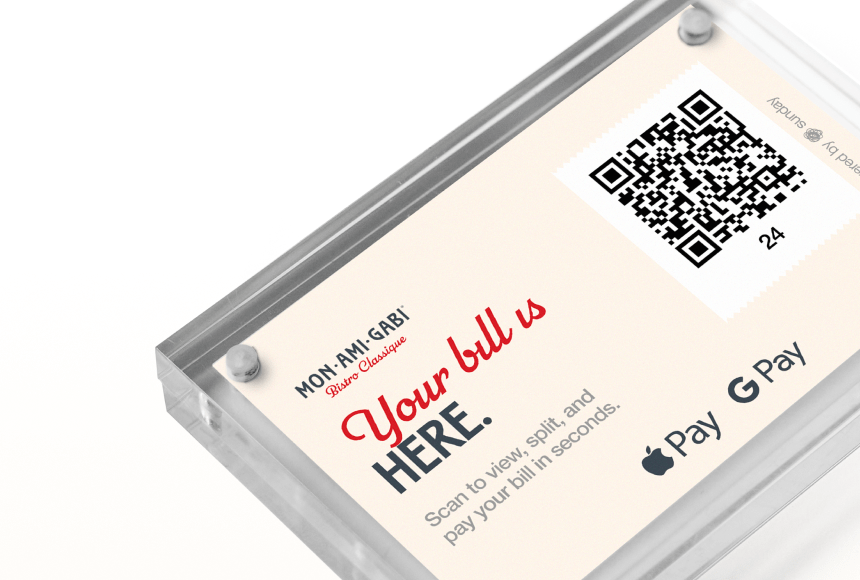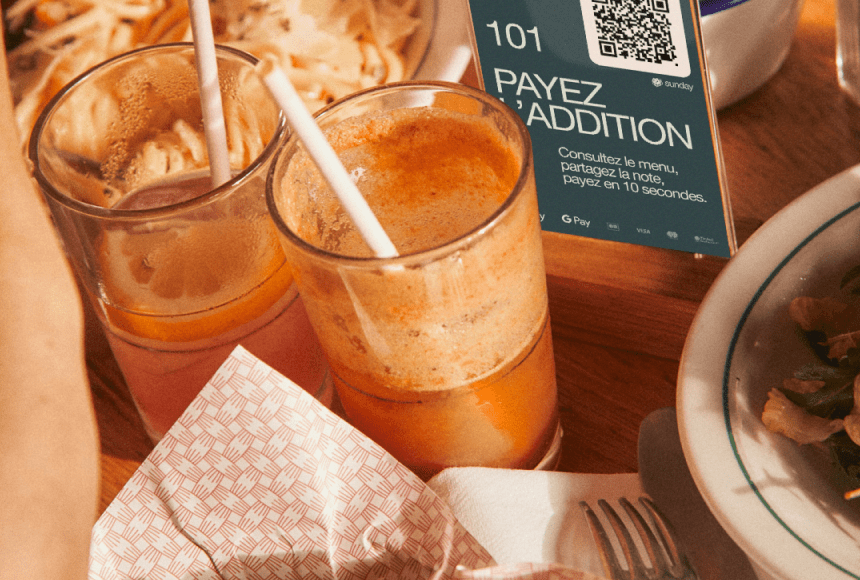
Streamline Your Restaurant Operations with Smart Tools
Why Efficiency Matters More Than Ever
Running a restaurant has never been for the faint of heart. You juggle orders, manage fluctuating inventory and, of course, lead a team of dedicated individuals who are responsible for ensuring guests have a wonderful dining experience. The reality is that staff efficiency is a huge factor in success. According to the National Restaurant Association (restaurant.org), over 70% of operators plan to invest more in technology to handle these challenges more effectively. Why? Because technology can save time, reduce errors, and allow your staff to focus on what they do best—delighting your patrons.
From tableside ordering to automated scheduling, tech is no longer a novelty—it’s a necessity to stay competitive. If you’ve been considering upgrading your systems or looking into fresh ways to boost staff efficiency, you’re not alone. Below, we’ll explore five concrete ways technology can make your restaurant team work smarter, not harder, in today’s fast-paced industry.
1. Implement a Cloud-Based Point-of-Sale System
Gone are the days of clunky cash registers or outdated, offline machines. A cloud-based Point-of-Sale (POS) system is more than just a payment terminal—it’s the command center of modern dining establishments. By centralizing all transactions and information in the cloud, your team can access real-time data from anywhere, whether it’s the front of the house or in the kitchen.
What does this look like in practice? Imagine a server taking an order tableside on a tablet. The server taps a few buttons, and the order immediately appears on the kitchen display. No more illegible handwriting, no more time lost running back and forth between tables and the kitchen. Everything is synchronized automatically.
- Real-time updates. Whether it’s sales data or menu changes, everyone has the most current information at their fingertips.
- Easy reporting. Cloud-based systems often include effortless analytics tools, so you can see which items sell best, when your slow periods are, and how staff performance measures up.
- Less downtime. A web-based interface means fewer reboot cycles or system crashes, and automatic software updates keep your system running smoothly.
Additionally, a cloud-based POS supports contactless payments, QR code-based tipping, and can integrate with payroll or inventory systems, further reducing data entry errors and manual tasks. A well-implemented system can free your staff to interact more with guests, ensuring their comfort while boosting average check sizes. Efficiency meets customer satisfaction.
2. Adopt Integrated Communication Tools
The hectic environment of a restaurant often hinges on seamless communication. One staff member forgets to pass along a special request, and suddenly the ticket to the kitchen is missing critical details. This kind of breakdown can lead to wasted ingredients, longer wait times, and irritated customers. Using integrated communication tools can virtually eliminate these misunderstandings.
For example, kitchen display systems (KDS) that are tied directly to your POS ensure that every order detail hits the kitchen instantly. If a server needs to flag a dish as gluten-free, the note appears automatically on the kitchen monitor. Think of it like a well-choreographed dance: each person knows exactly when and where to move because cues are delivered precisely when needed.
- Provide real-time checklists and updates. A heads-up display can show how many orders are in the pipeline, which are high priority, and which have been fulfilled.
- Range of communication methods. Some systems offer in-app messaging, allowing servers and kitchen staff to chat instantly about substitutions, specials, or issues.
- Reduce paper clutter. Switching from paper tickets to a digital system lessens the chance of losing orders, and your staff won’t have to juggle multiple slips.
This approach doesn’t just help inter-staff communication, it can also improve the diner experience. When staff members are aligned and informed, your guests notice how quickly food arrives and how accurately their requests are fulfilled. It transforms what could be a stressful environment into a more orchestrated performance—much like a perfectly executed four-course meal.
3. Simplify Scheduling and Staff Management
Restaurant staffing can feel like a puzzle with pieces that never quite fit. Scheduling is especially tricky: you have to account for peak hours, last-minute sick leaves, staff availability, and fair distribution of shifts. Technology can turn this mechanical, often stressful process into a streamlined practice.
Automated scheduling apps allow you to create and share schedules with a few clicks. Your servers and kitchen team can input their availability, request days off, or swap shifts without multiple phone calls or scribbled notes left on the bulletin board. You’ll often get features like:
- Automatic shift conflicts alerts. The system will warn you if an employee is double-booked.
- Built-in labor cost calculators. Keep track of labor budgets and forecast costs in real time.
- One-click approvals. Quickly accept or deny shift swap requests while ensuring the restaurant is always adequately staffed.
Now, you’re saying goodbye to hours spent on administrative tasks so you can focus on your core responsibilities. Your staff loves it too, because they can check shifts right on their phones. It’s a recipe for increased morale—nobody wants to wait on an outdated schedule or scramble to cover last-minute changes.
As a bonus, these scheduling solutions often link to point-of-sale data, letting you determine peak hours and optimize staffing accordingly. This ensures that whether it’s a big rush at brunch or a bustling Saturday night, every shift has enough hands on deck.
4. Use Self-Payment and QR Code Solutions
One of the biggest bottlenecks in many restaurants happens at the end of a meal: the dreaded wait for the check. Servers are busy clearing tables, lines form at a payment terminal, and guests get impatient if they’re in a hurry. This is where self-payment and QR code solutions shine—the guest simply scans a code at their table, reviews the check, adds a tip, and pays right on their phone.
Here’s a little secret: not only does this speed up table turnover, but it also lightens the load on your staff. Instead of running back and forth, they can focus on other tasks—like greeting new patrons or checking on a large party. And the best part is, offering fast, convenient payment options often leads to happier guests (who might even leave higher tips).
Some advanced platforms go further. They let customers split the check with ease, reducing awkward conversations about who ordered what. Or, they replace the old “How was everything?” with integrated feedback and offer a direct link to leave a review on Google if diners choose.
Among these tech innovations is sunday, a solution that helps your team by removing friction at payment time. With sunday, guests use a simple QR code to handle payment, tip, and yes, even share thoughts via Google reviews, all without chasing down a server or dealing with multiple cards. Fewer steps for your staff means more time to focus on service quality. It’s the difference between juggling flaming pans and calmly plating a dish—significant impact with minimal fuss.
| Tech Tool | Key Benefit | Potential Pitfall |
|---|---|---|
| Self-payment apps (e.g., QR code) | Faster table turnover, less server strain | Requires strong Wi-Fi for smooth operation |
| Mobile POS terminals | Tableside payments and ordering | Device maintenance and updates |
| Online ordering platforms | Expand revenue streams (takeout, delivery) | Integration issues with POS if not chosen carefully |
5. Data Analytics for Informed Decision Making
Ever wonder why a certain appetizer sells out every Thursday but barely moves on Mondays? Or why your staff get overwhelmed at particular times of the day? Tech-driven analytics answer these questions and more. By tapping into real data—like what time guests tend to arrive, which meals get high ratings, or how many staff members are most productive at certain tasks—you can refine your operations in ways that directly enhance staff efficiency.
Here’s how data analytics can help:
- Optimize your menu. Identify top and low performers. If that underperforming risotto is complicating the kitchen workflow for minimal return, it might be time to retire it.
- Adjust scheduling to traffic. Data reveals peak days, hours, and even seasonal patterns, so you know exactly when to boost staff levels.
- Pinpoint training opportunities. Are there servers who consistently perform better during peak hours? You can analyze what they’re doing right and train others accordingly.
A 2019 study by the research firm Technomic (technomic.com) found that data analytics was a significant factor in the growth of chain restaurants. But you don’t have to be a giant chain to use analytics effectively. Even local bistros and family-run eateries can use dashboard tools connected to their POS or reservation system to see what works and what doesn’t.
Remember, the goal isn’t to drown in numbers. It’s to simplify your decision-making process, taking the guesswork out of day-to-day operations, and giving your staff the support they need to shine.
Collaborate with Your Team for a Smooth Tech Rollout
It’s tempting to rush out and adopt the latest gadget or app, but successful implementation requires collaboration with your staff. They’re the ones who will be using these tools daily. Setting aside time for demonstrations, training, and feedback loops helps prevent any hiccups—and ensures everyone feels empowered rather than burdened by new systems.
If you involve your servers, bartenders, and kitchen staff from the get-go, they’ll be more likely to see the benefits. This reduces resistance, fosters excitement, and leads to higher adoption rates. We all know from cooking: if you don’t taste your sauce as you go, you might end up with a dish that’s off-balance. The same is true with technology. Gather opinions, make slight adjustments, and keep refining until it’s just right.
A Recipe for Sustained Growth
Boosting staff efficiency isn’t a one-step process. It’s an ongoing effort that evolves along with the restaurant industry itself. Embracing technology in thoughtful, targeted ways saves money, grows revenue, and makes your restaurant an appealing place to work. Happy employees are crucial, and well-deployed tech can lighten their load, leading to better service overall.
Operators who invest in modern solutions not only streamline tasks—they also free up energy to innovate on menus, create memorable guest experiences, and expand catering or takeout options. Meanwhile, your servers aren’t bogged down by administrative burdens and can channel their enthusiasm into top-tier hospitality.
If you’re just starting out, begin by identifying which area needs attention the most. Is it the swirling chaos around check presenters? Or the time-consuming scheduling system? Then make a plan for integrating a new tool, monitor the results, and iterate from there. Lean on industry data, connect with peers who have gone through similar transformations, and remain open to the inevitable tweaks and refinements.
Empower Your Team, Grow Your Business
The success of your restaurant hinges on the people who work there. By bringing in the right technology, you’re giving your staff the tools to excel, removing unnecessary stressors and making it easier for them to focus on delivering standout service. From cloud-based POS systems to integrated communication tools and from easy self-payment to smart data analytics, each investment in technology is an investment in your people.
When your staff has more time for what truly matters—making your guests feel welcome, mixing a perfect cocktail, garnishing the final plate—your restaurant’s efficiency and profitability naturally rise. Adopting these five tech-savvy methods doesn’t just give you a competitive advantage; it strengthens the heart of your operation. It’s like having an extra sous-chef in the kitchen, always ready with the next ingredient to keep the entire operation humming.
In the end, the right technologies weave invisibly into your daily operations, fostering a culture of collaboration and excellence. Whether you run a cozy brunch spot or a high-end steakhouse, consider how these tools enable your team to do what they do best: serve up unforgettable experiences and keep your guests coming back for more.
Find out more today
Drop us your details below and we’ll reach out within the next 24h
Get the full, detailed picture.
sunday elevates your business with insightful data, instant feedback and precise analytics.




